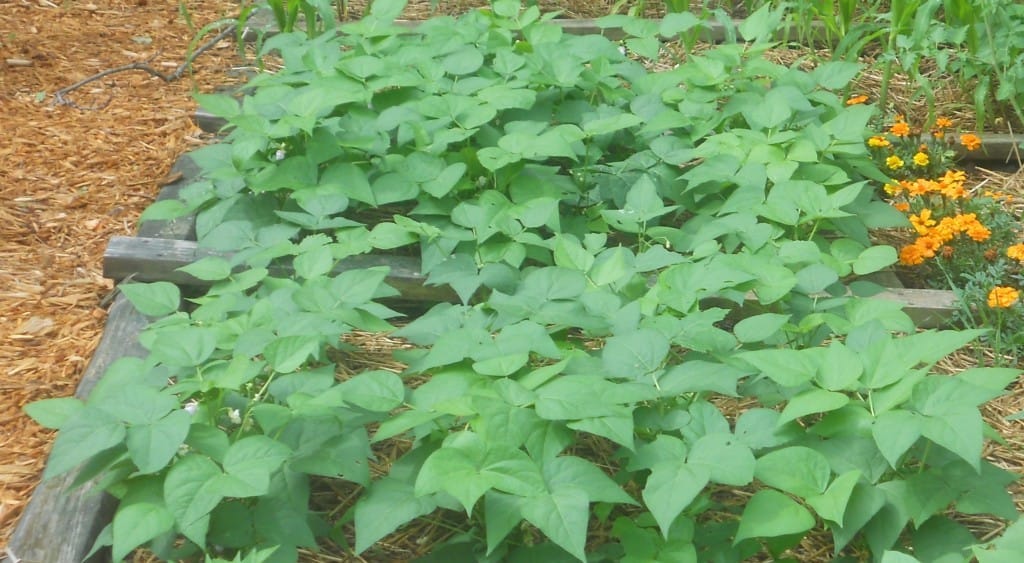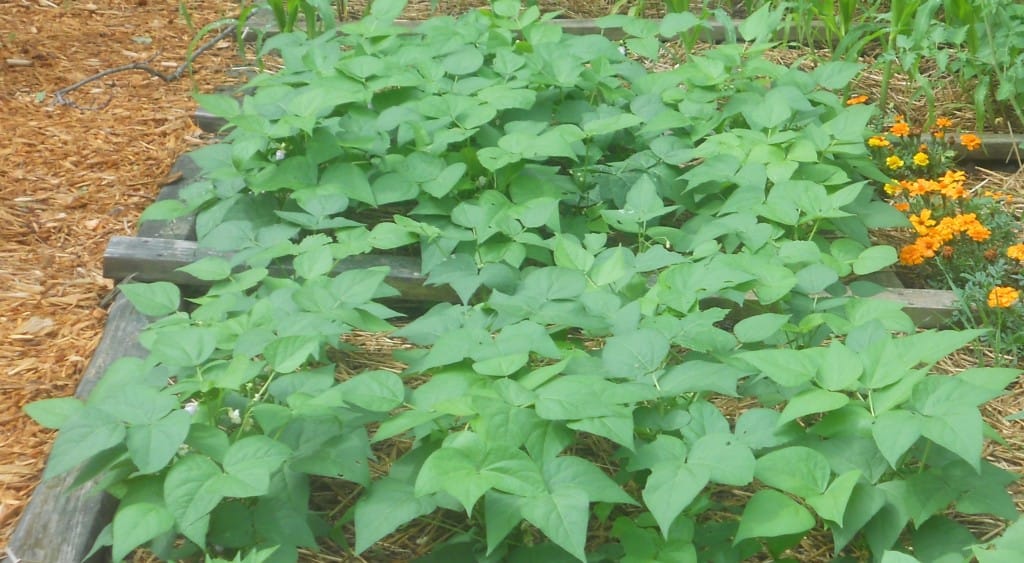Green beans are an integral part of any vegetable garden. Also called snap beans or string beans, they are not hard to grow and require little fertilization. Whether harvested and prepared the old Southern way, cooked with a piece of bacon, or steamed with a bit of onion, they are a summer dinner staple. This post contains great information taken from Robert Westerfield’s circular Home Garden Green Beans.
For community gardeners the first step in successfully growing green beans is to know the growing types. Bush beans are compact and don’t need extra support to grow. Pole beans run and do require support such as a cage or trellis (think of growing up a pole). Be thoughtful of using trellises in a community garden setting. Anything tall may created unwanted shade. Half-runner beans are somewhere in between bush and pole beans. If they are not supported they will spread more than bush beans. Bush beans are a great option for the limited space of a community garden.
All three types of beans grow best in air temperatures of 65-85 degrees F. Soil temperatures should be above 55 degrees F for good germination. One helpful tip is to soak the bean seed in warm water overnight. This may help speed germination.
Seed should be planted about 1 inch deep. You can do this without a ruler. Gently push the beans seed into the soil with your index finger. When your first knuckle is even with the soil top, that is about 1 inch. To help prevent disease problems, be careful not to crowd the beans. You want air movement between the plants so leave about 6 inches between seeds.
After planting, gently pat the dirt ensuring good seed to soil contact. Keep the seeds moist until the beans emerge. Mulching will help with that. After the plants become established water as needed, about twice a week.

For best flavor, harvest beans before they become fully developed. Pick often so the plant will continue to produce. Your harvest can be stored in a cool, dry place for several days. Or, you may want to try your hand at canning if you have alot of beans.
Some tried and true cultivars of bush beans are Blue Lake 274, Gina, Roma II, and Bronco. If you want to be adventurous and try something different consider Mayflower, which is said to have come to America with the Pilgrims. Or, Pencil Pod Black Snap Bean which produces black beans. Other cultivars to consider are Stringless Commodore, October Bean, Top Crop, and Contender. Master Gardener Extension volunteers have had success with these types.
Kentucky Wonder, Rattlesnake, Blue Lake, and McCaslan are good pole bean choices for the Southern garden. If you are thinking of trying half-runners look at Mountaineer, Volunteer, or Peanut Bean Pink.
Seed catalogs along with feed and seed stores are full of great choices. Try to choose seed that has been grown successfully in our area. If you have had success with a certain cultivar, please share that information in the comments section. For more information on cultivars for your area, contact your local UGA Extension Agent.
Happy Gardening!
- ParSLAY the Day! - June 12, 2024
- 6th Annual Great Southeast Pollinator Census - May 28, 2024
- Are you ready for Pepper Palooza? - July 5, 2023
